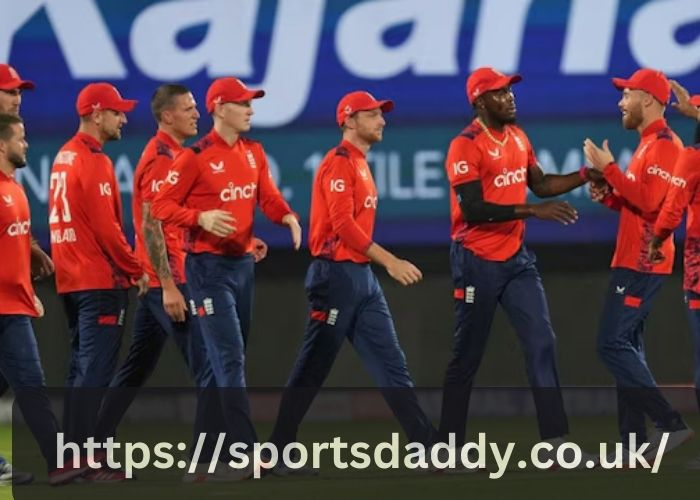
Shirt Swap
In the world of sports, few traditions are as iconic as the shirt swap. This gesture of respect between players has long been a part of sporting history, symbolizing camaraderie, mutual admiration, and the universal language of sportsmanship. While most fans see it as a simple exchange of jerseys, the shirt swap has deeper meanings that vary across sports, teams, and countries. From its origins to its modern-day impact, let’s dive into the rich tradition of shirt swapping and its significance on and off the field.
The Origins of the Shirt Swap
The first recorded instance of a shirt swap dates back to 1931, when France defeated England in a historic soccer match. In a show of respect and excitement, the French players requested to keep the English jerseys as souvenirs of their rare victory. This marked the beginning of what would become a worldwide custom across various sports, particularly in football (soccer) but also seen in rugby, basketball, and even tennis.
Over the years, shirt swapping has evolved into a powerful symbol of respect, particularly in international competitions. Players trade shirts with opponents they admire or respect, creating a lasting memory of their time on the field. The shirts themselves become mementos, treasured not only for their representation of the game but also for the connection forged between players.
Why Athletes Swap Shirts
Shirt swapping is more than just a tradition; it’s a way for players to show respect and admiration for one another. It’s a form of silent acknowledgment of the opponent’s skill and effort. Swapping shirts says, “We gave it our all,” and there’s an element of unspoken sportsmanship within that exchange. This is especially true in highly competitive matches, where players bond over the physical and mental challenges they’ve endured together.
For younger players, swapping shirts with a seasoned star or their idol is a dream come true. It’s a token of inspiration they carry forward in their careers, reminding them of the journey ahead. In major tournaments, it is not uncommon to see younger players or rookies approach established legends, hoping for a shirt swap that symbolizes not only respect but also admiration and aspiration.
In some cases, shirt swaps also allow players to carry home a piece of a memorable victory or experience. For example, winning teams often swap shirts as a way to celebrate shared success. Meanwhile, losing teams may exchange jerseys with the victors as a nod to their strength and superiority on that day.
The Cultural Impact of the Shirt Swap
Beyond the sports field, the shirt swap has impacted fan culture and fashion. For fans, seeing their favorite player swap shirts with an opponent highlights the unity and mutual respect in sports. Even in the most intense rivalries, the shirt swap reminds fans and players alike that competition doesn’t erase the shared love for the game.
With the rise of social media, shirt swaps have become moments that fans eagerly wait for and analyze. When two famous players swap shirts, it often goes viral, becoming a talking point among fans and media. It brings together fans from different teams and countries, uniting them in appreciation for the players and the game.
For some, the shirt swap has inspired a desire to own the same jersey as their favorite athlete, creating a surge in demand for custom t-shirts that replicate these memorable pieces. This demand reflects the way fans seek to connect with the culture and history of their sport by owning something similar to what their idols wear.
Famous Shirt Swaps in History
Over the years, there have been some legendary shirt swaps that fans still talk about. One of the most famous took place during the 2005 Champions League final when Steven Gerrard, captain of Liverpool, swapped shirts with AC Milan’s legend Paolo Maldini. It was an iconic moment that capped off a historic match in which Liverpool came back from a three-goal deficit to win the game in penalties.
Another memorable swap happened in the 2014 World Cup when American goalkeeper Tim Howard, who made an astonishing 16 saves, swapped shirts with Belgian forward Romelu Lukaku after Belgium’s win over the United States. The exchange symbolized the mutual respect between players from different countries who had just experienced a grueling battle on the world’s biggest stage.
In basketball, the shirt swap is less common but equally powerful when it happens. Kobe Bryant’s farewell tour in the NBA saw him swapping jerseys with various players, each swap a moment of respect from one legend to another. These swaps became legendary for fans and showcased the universal admiration Kobe received from players across the league.
Shirt Swap Etiquette
There’s an unspoken etiquette to shirt swapping. Typically, players make eye contact or gesture toward one another after a match to indicate their interest in a swap. In some cases, they may have already decided on the exchange before the game begins. However, certain moments call for discretion—players don’t usually swap shirts after a particularly contentious game, as emotions may still be running high.
In major tournaments, players sometimes request shirts from their opponents before a match starts, especially if they’re up against a famous team or player they admire. Occasionally, swaps don’t go as planned. For example, some players may be hesitant to swap with rivals from bitterly opposed teams or in high-stakes tournament finals. However, even in these cases, the respect for the game typically prevails.
The Impact of Shirt Swaps on Fans and Collectors
For fans, a player’s jersey is a symbol of their commitment and loyalty to the team. When players swap jerseys with opponents, it becomes a tangible memory of the match, often sparking admiration among fans. Some fans collect these jerseys as part of their personal sports memorabilia, and auctions for certain swapped shirts can go for thousands of dollars.
Certain charities even auction off players’ swapped jerseys, leveraging this tradition for a good cause. This approach blends the iconic status of these items with philanthropy, allowing fans to contribute to social causes while owning a piece of sports history.
The Future of the Shirt Swap Tradition
As sports evolve, so does the shirt swap tradition. Today, it’s more than just a custom—it’s a celebration of sportsmanship and a universal language of respect. While its roots may be in soccer, the gesture has grown to encompass athletes from various disciplines and continues to unite players and fans alike.
The shirt swap tradition will likely continue to evolve with new generations, adding new layers of meaning and cultural relevance. For those looking to bring a piece of that legacy home, custom t-shirts inspired by iconic shirt swaps have become popular among fans who want to celebrate their favorite players and moments in their own way.
In a world where competition can often overshadow camaraderie, the shirt swap remains a reminder that, at its heart, sport is about unity, respect, and the shared joy of the game.



